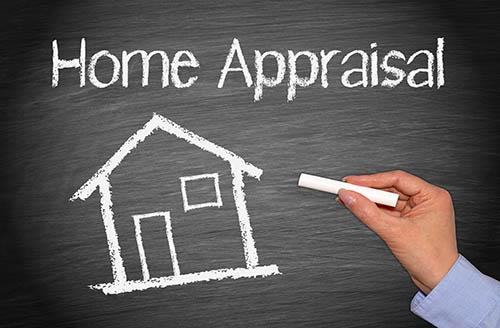The Most And Least Expensive Cities In America
 The cost of living in America varies widely in different parts of the country. In general, it is less expensive to live in the country than in the cities.
The cost of living in America varies widely in different parts of the country. In general, it is less expensive to live in the country than in the cities.
However, there are many cities where the cost of living is modest compared to others where the money needed to live there is outrageous in comparison.
These rankings came from comparing the monthly cost of renting a one-bedroom apartment, utilities, the price for gasoline, and the cost of groceries.
The Ten Lowest-Cost Cities For Renters
From Texas and Ohio to New Mexico and Arizona, there are some nice cities in this low-cost group.
The top ten lowest-cost cities are:
- El Paso, Texas
- Lincoln, Nebraska
- Toledo, Ohio
- Wichita, Kansas
- Louisville, Kentucky
- Tulsa, Oklahoma
- Memphis, Tennessee
- Lexington, Kentucky
- Albuquerque, New Mexico
- Mesa, Arizona
For the top ten lowest-cost cities, the total monthly expenses for two adults ranges from just under $1,200 per month in El Paso to just over $1,500 per month in Mesa. These cities are a great deal when compared to other cities.
In America, the median rent of $1,566 per month is more than the total amount needed to live in these low-cost cities.
The Ten Highest-Cost Cities For Renters
It is not surprising that the biggest metropolitan areas are on the high-cost list.
The top ten highest-cost cities are:
- San Francisco, California
- New York, New York
- San Jose, California
- Oakland, California
- Boston, Massachusetts
- Jersey City, New Jersey
- Washington, D. C.
- Los Angeles, California
- Seattle, Washington
- Irvine, California
For the top ten highest-cost cities the total monthly expense for two adults ranges from just over $2,000 per month in Irvine to over $4,200 per month in San Francisco. For those wanting to live in the “City by the Bay” of San Francisco, both of the people in a couple better have an incredibly well-paying executive position to be able to afford to live there.
What About Home Buying?
The national median home price in America is $229,000. The city with the highest median home price is San Francisco at $1,352,000. New York is only $672,000 in comparison. The median home price in El Paso is $129,800; however, El Paso does not have the lowest-priced homes in the country.
The Top Ten Cities With The Lowest-Priced Homes
There are many cities where the homes sell at bargain prices for under $100,000, these include:
- Detroit, Michigan — Median home value: $42,800
- Dayton, Ohio — Median home value: $66,500
- Cleveland, Ohio — Median home value: $67,600
- Lansing, Michigan — Median home value: $77,100
- Buffalo, New York — Median home value: $77,800
- Toledo, Ohio — Median home value: $78,600
- Rochester, New York — Median home value: $79,400
- Akron, Ohio — Median home value: $80,100
- South Bend, Indiana — Median home value: $81,100
- Brownsville, Texas — Median home value: $85,900
Conclusion
There are bargains to be found in many parts of America for those that do not have to live in the big cities.
Many younger people are now part of the “gig” economy. They do all of their work online and can work from anywhere that has a decent Internet connection. For these young people, finding a lost-cost city in America to live in and finding a modestly-priced home to buy is not limited to any particular area.

 Last week’s economic reporting included readings on inflation, the post-meeting statement from the Fed’s Federal Open Market Committee, and consumer sentiment. Weekly readings on mortgage rates and jobless claims were also released.
Last week’s economic reporting included readings on inflation, the post-meeting statement from the Fed’s Federal Open Market Committee, and consumer sentiment. Weekly readings on mortgage rates and jobless claims were also released. The Federal Reserve’s monetary policy committee decided against changing the Fed’s benchmark interest rate range of 0.00 to 0.25 percent. The Federal Open Market Committee said in its post-meeting statement that it is not considering raising rates until 2023. Two of 17 FOMC members felt that the Fed’s key rate may rise in 2022.
The Federal Reserve’s monetary policy committee decided against changing the Fed’s benchmark interest rate range of 0.00 to 0.25 percent. The Federal Open Market Committee said in its post-meeting statement that it is not considering raising rates until 2023. Two of 17 FOMC members felt that the Fed’s key rate may rise in 2022. When someone is thinking about buying a home, one of the key parts is the home appraisal. The appraisal ensures that the buyer is paying a fair price for the home while also protecting the mortgage lender against taking a loss.
When someone is thinking about buying a home, one of the key parts is the home appraisal. The appraisal ensures that the buyer is paying a fair price for the home while also protecting the mortgage lender against taking a loss. If you’ve been putting off your house hunting, it’s time to head out. Summer is the best season to go shopping for a new home, for a variety of reasons.
If you’ve been putting off your house hunting, it’s time to head out. Summer is the best season to go shopping for a new home, for a variety of reasons.